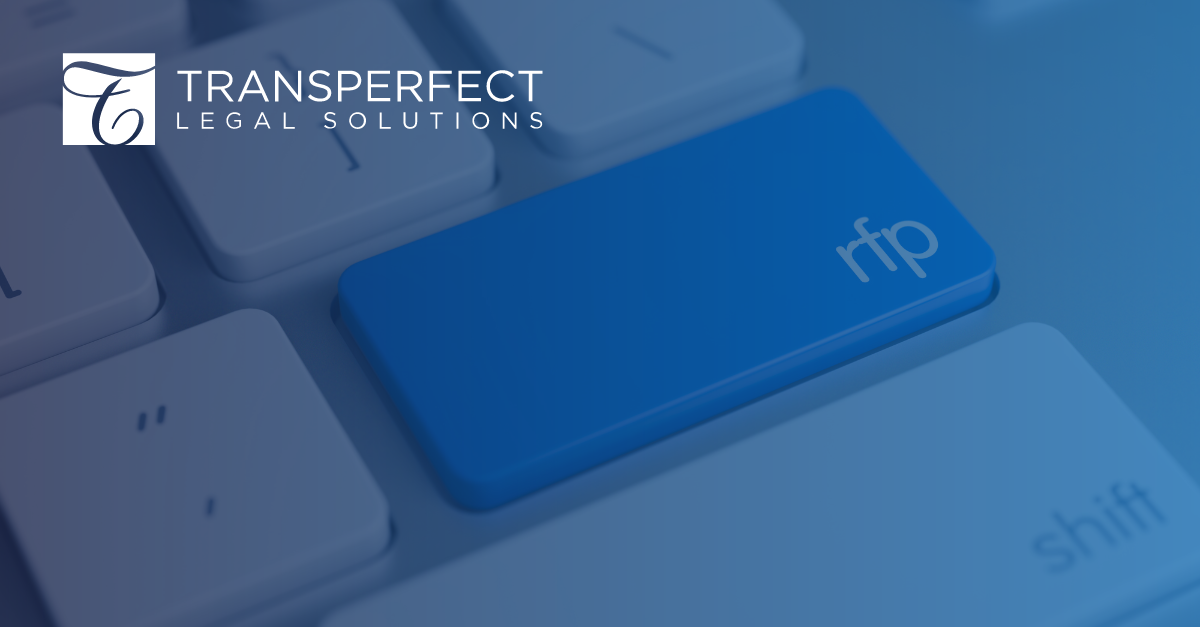Five Things to Consider When Thinking About an RFP
Five Things to Consider When Thinking About an RFP


A primary objective of an e-discovery RFP is to identify the best long-term partner for your organization. Providers’ core services—collection, processing, and review—are mostly the same. It is how these services are implemented and enhanced throughout each project and across the enterprise that sets providers apart.
It is difficult to measure and compare objectives within an RFP. To assist organizations in selecting the best enterprise partner, here are five ways to help enhance the RFP process.
1. Inquire with Service Providers Prior to Issuance of the RFP
Once the RFP is issued, most organizations appropriately require one official communication channel to keep all potential providers on an equal footing.
Prior to the issuance of an RFP, the organization may contact any number of service providers both to evaluate and learn from them. Legal service providers are uniquely positioned and at an advantage because they are exposed to the hundreds of e-discovery cases that law firms and corporate legal departments funnel to them.
For example, even the most sophisticated organizations lack true insight into how their processes compare to others in the industry. Service providers, however, play a delicate balance. They learn from their clients and implement those lessons, best practices, customized solutions, and workarounds. Many providers will also take it a step further and offer to evaluate an organization’s internal process and make recommendations on best-of-breed technology, workflows, and cost efficiencies.
2. Feedback from Service Providers Prior to Issuance of the RFP
RFP questions are often inadvertently subjective and left open to some interpretation. It may be worthwhile to share these questions with select providers prior to the issuance of an RFP to determine if their answers are the types of answers you hoped to receive.
Service providers receive hundreds of RFPs, and many have a team of subject matter experts scouring them to provide answers and outline scenarios. An organization may issue one RFP every few years and read six to seven proposals. Take advantage of those providers and ask them questions but be careful of nondisclosure agreements. Some providers will help craft questions specific to an organization’s needs and many will share previously received questions.
These service providers are in the best position to consult with organizations at this early stage to offer advice and assist in creating an agile, cost-effective, and efficient model that will lead to a successful relationship.
3. Engage Each Service Provider on a Project Prior to the Issuance of the RFP or Post issuance of the RFP as a Decision-Making Tool for the Finalists
The RFP should be the beginning of an important enterprise relationship. It demands a holistic viewpoint, significant skill and expertise in the underlying substantive work, and proactive and detail-oriented customer service. Issues will arise substantively and financially, and, depending on how they are handled, the relationship between the organization and service provider could crumble or be cemented.
For providers the organization is unfamiliar with, this can be a significant disadvantage. But it also presents an opportunity for the organization to engage these newfound providers on a ‘test’ project. During this ‘test’ engagement, the organization and provider learn in parallel about each other’s workflows, values, and culture. Final decisions are often based on whether the organization and provider have shared values and cultural alignment.
4. Question & Answer Period after the Issuance of the RFP
Once the RFP is released, communication is limited. Without an avenue to ask questions, the service provider is left to interpret questions and hope that they provided the requisite answers. A better approach is to give each participant an opportunity to ask written questions. The organization then compiles, answers, and returns those questions to each provider as a supplement to the RFP. This again keeps all providers on equal footing.
5. Pricing is Negotiable
Proposals are so much more than price. An organization that solely looks to price overlooks the more important factor—the relationship. Cost is a significant factor, but it is one of the only items of an RFP that is truly negotiable. The right enterprise partner, on the other hand, is an extension of the in-house team. They proactively identify and prevent issues while continuously keeping the client informed. Their priority is the client—a lack of communication should never be a concern. What’s more, the stronger the relationship, the more amenable the organization to price negotiations. The right partner means a mutual understanding that both parties are equally comfortable that they are receiving due compensation for their efforts. It is a business forged by respect for the successful completion of the project.
Conclusion
The RFP process can be daunting. It is time-consuming for the issuing party and responding providers. Working with providers during the run-up to an RFP is invaluable and helps to glean industry insight, feedback on the RFP process, and opportunities to engage newly identified providers in a project to evaluate their expertise and customer service. During an RFP, leave an opportunity for questions to remove as much subjectivity as possible, and remember, price is negotiable. A strong relationship and the alignment of values and culture means more than cost. A cemented enterprise partner will be aware of fluctuating industry rates and ensure they remain competitive.